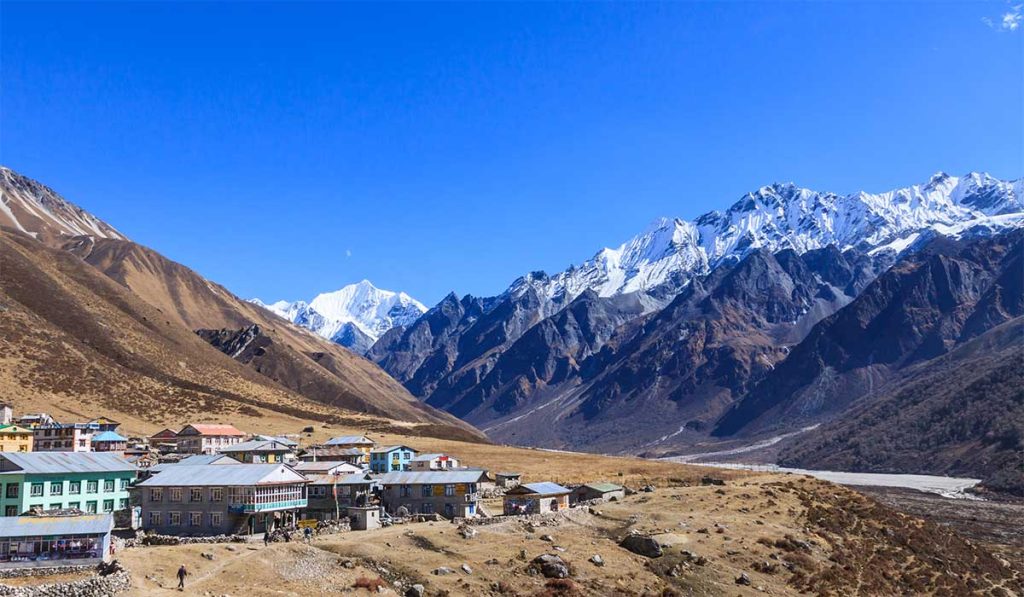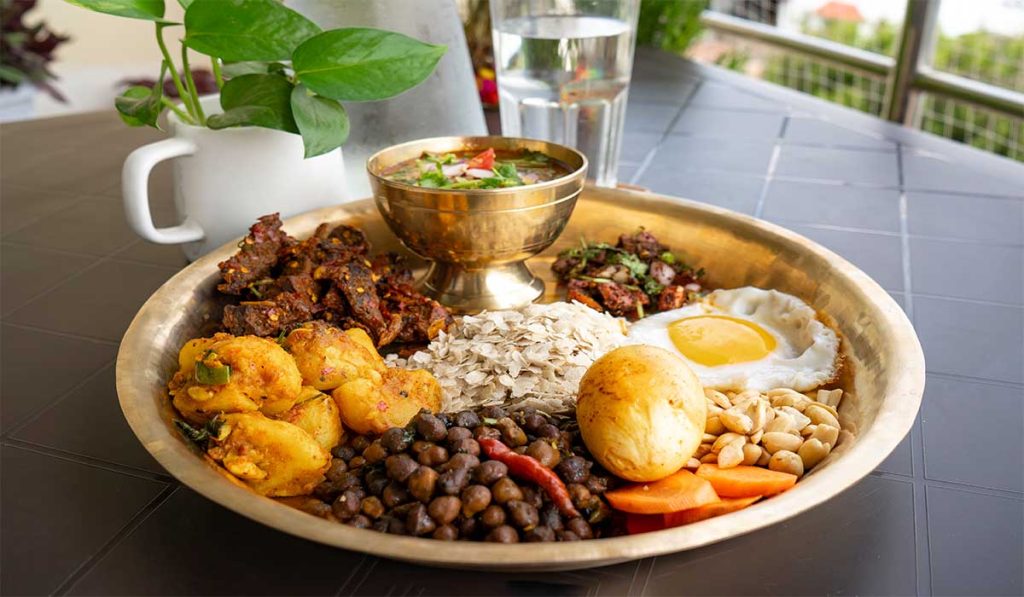
Langtang Valley trek hides a beautiful peak named Tserko Ri in the heart of the Himalayas. This peak is perfect for brave people who want to reach the Himalayas, enjoying peaceful trails. Being less crowded and extremely beautiful, Tserko Ri delivers a calm and unforgettable experience to its visitors.
Tserko Ri is 5,033 meters (16,510 feet). From the top, you can clearly see Langtang Lirung, Shishapangma, and Dorje Lhakpa. The trek is short but very rewarding. Each step brings you closer to nature and high-altitude scenery.
Along the footpath, you will pass prayer flags, charming Tamang villages, peaceful monasteries, and fluttering flags. The trek is also culturally rich. Friendly local people welcome visitors and make the journey even more special.
Whether you are a beginner or an experienced trekker, Tserko Ri offers a fulfilling adventure. Within a few days, trekkers can experience the true beauty of the Himalayas. Therefore, anyone who seeks exceptional mountain scenery, pure air, and an unforgettable experience can choose the trek to Tserko Ri Nepal.
Trek Highlights of Tserko Ri
As said in the overview, the Tserko Ri Trek is a very scenic peak. Its is a viewpoint in itself. The views form the summit are undoubtedly major highlights. However, there are few more that make this trek truly special:
- Peaks like Langtang Lirung, Shishapangma, and Dorje Lakpa rise dramatically against the sky. And you’ll be witnessing all these live.
- The trek allows you to experience rich Tamang and Sherpa culture as you pass through traditional villages, visit old monasteries, and see prayer flags beautifully fluttering in the air.
- The trail takes you through dense rhododendron forests, peaceful rivers, and wide alpine meadows, creating ever-changing natural scenery.
- The trek is deeply rewarding, giving you a real Himalayan adventure of 5–7 days, perfect for travelers with limited time but big dreams.
- Each step on the trail provides fantastic opportunities for photography, with dramatic landscapes, glaciers, and consistently breathtaking mountain highlights.
- Unlike other busy treks in Nepal, Tserko Ri is peaceful and less crowded, allowing you to connect with nature and enjoy the journey completely.
Tserko Ri Trek General Itinerary

Day 1: Kathmandu (1,400 m) to Syabrubesi (1,503 m)
You will leave Kathmandu and drive to Syabrubesi. The road distance is 120km and normally requires 6–7 hours. Alongside the window is a scenic view of winding mountain roads, rivers, and small villages.
Day 2: Syabrubesi (1,503 m) to Lama Hotel (2,470 m)
The trek officially begins. Trekkers have to face a gradual climb through forests and riversides. This takes around 4–5 hours of walking to reach Lama Hotel after covering about 8 km.
Day 3: Lama Hotel (2,470 m) to Langtang Village (3,430 m)
Trekkers will walk for 5–6 hours across nearly 10 km. The walk is enjoyable with mountain scenery. After passing through the Ghodatabela, trekkers reach the traditional Langtang Village.
Day 4: Langtang Village (3,430 m) to Kyanjin Gompa (3,865 m)
Waking up quickly from the Langtang village, trekkers starts their gentle climbs to Kyanjin Gompa. They will pass through wide landscapes in 4–5 hours of trekking. Finally after covering roughly 7 km, Kyanjin Gompa is reached.
Day 5: Acclimatization Hike to Tserko Ri (5,033 m) and return to Kyanjin Gompa (3,865 m)
A few hour of steep hike takes the trekkers to Tserko Ri for breathtaking 360° mountain views. Enjoy this magical viewpoint and return till afternooon. The round trip takes 5–6 hours and covers about 9 km.
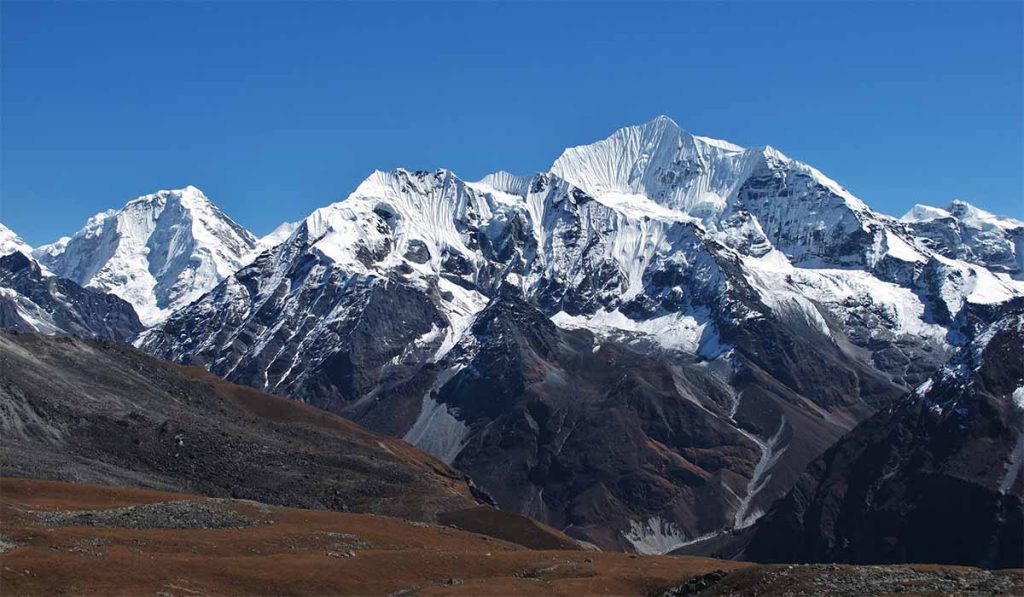
Day 6: Kyanjin Gompa (3,870 m) to Kyanjin Ri (4,773 m) and then to Lama Hotel (2,470 m)
Kyanjin Ri is another highlight of this trip. It can be visited with a short hike early in the morning. Once you enjoy the sunrise views, you descend all the way back to Lama Hotel, walking 14 km in 5–6 hours through forests and villages.
Day 7: Lama Hotel (2,470 m) to Syabrubesi (1,503 m)
Trekkers will descend steadily through forests and riverside paths. To reach Syabrubesi, it will take 4–5 hours, covering around 10 km.
Day 8: Syabrubesi (1,503 m) to Kathmandu (1,400 m)
A scenic 6–7 hour drive of 120 km will take you back to Kathmandu. This officially end your amazing Tserko Ri trek.
Tserko Ri Trek Preparation and Difficulty
The Tserko Ri Trek is classified as a medium trek in Nepal. This means that it is not very difficult, but it is not very easy either. Any person with basic fitness and strong will can complete it. As you walk higher on this trail, you will pass through both mild forest walks and steeper ascents. The most challenging part comes on the day you hike to Tserko Ri itself, where the air becomes thin and the climb feels tougher.
On average, you will walk 5–7 hours each day, covering distances between 7 and 14 km. This can be demanding, especially if you are a beginner. That’s why you have to keep your pace slow and steady. Trekkers who prepare in advance with some light training, such as jogging, walking, or stair climbing will find the trek manageable.
Fitness is important, but so is mental preparation. When trekking in high altitudes, one must possess patience and determination. You should know in advance about the continuous long-day walk. Even if you are new to trekking, a positive mindset will help you reach your goal.
Another factor to consider is altitude acclimatization. Since Tserko Ri is over 5,000 meters, your body needs time to adjust. This makes it very crucial to follow a carefully crafted itinerary. The 8 days trek to Tserko Ri as above can be followed. Besides, trekkers are advised to drink plenty of water and walk slowly, avoiding rushing.
In summary, both the beginners as well as experienced trekkers can do this trek. Trekkers just need to have basic training, good stamina and the right mindset. With these, anyone can enjoy this rewarding journey.
What is the Best Time to Visit the Tserko Ri?
For anyone planning the Tserko Ri trek, your travel time can make a big difference. The trek is most comfortable in spring and autumn. Spring is the time period from March to May and autumn is from September to November. At these times, the weather is usually stable and the mountain views are clear.
In spring, the valleys and hills become very attractive with flowering rhododendrons. Its looks like the entire landscape is painted in shades of red, pink, and white. The trekking days are comfortably warm and the surroundings feel fresh during the crisp mornings and evenings. Similarly, the autumn offers a different type of beauty. The post-monsoon freshness ensures clear and blue skies and uninterrupted views of Langtang Lirung, Dorje Lakpa, Shishapangma, and other distant peaks. Firm and dry trails make hiking safe and comfortable.
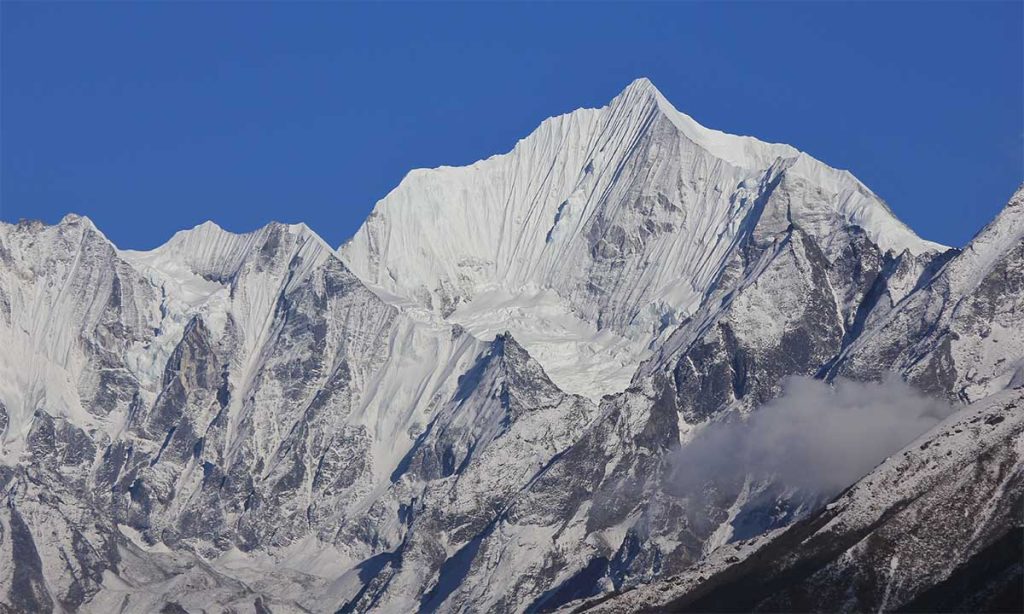
Winter trekking is less common. But due to that, it can appeal to those seeking peace and solitude. The temperature is too low at high altitude and some parts of the trail may be covered in snow. In monsoon months i.e. June to August, heavy rainfall brings several challenges. Trails become slippery, visibility becomes low and even the risk of landslide increases. But during this period, the valley becomes lush and green, offering a different perspective of the Langtang region for trekkers prepared for wet conditions.
Ultimately, spring and autumn remain the most favorable seasons for the Tserko Ri Trek. But winter and monsoon also receive visitors wanting a unique experience. It depends on how you want your Nepal trek to be.
Gear and Packing for Tserko Ri Trek
Packing smartly is very important for a comfortable Tserko Ri Trek. Trekkers should carry light but essential items to enjoy the journey fully.
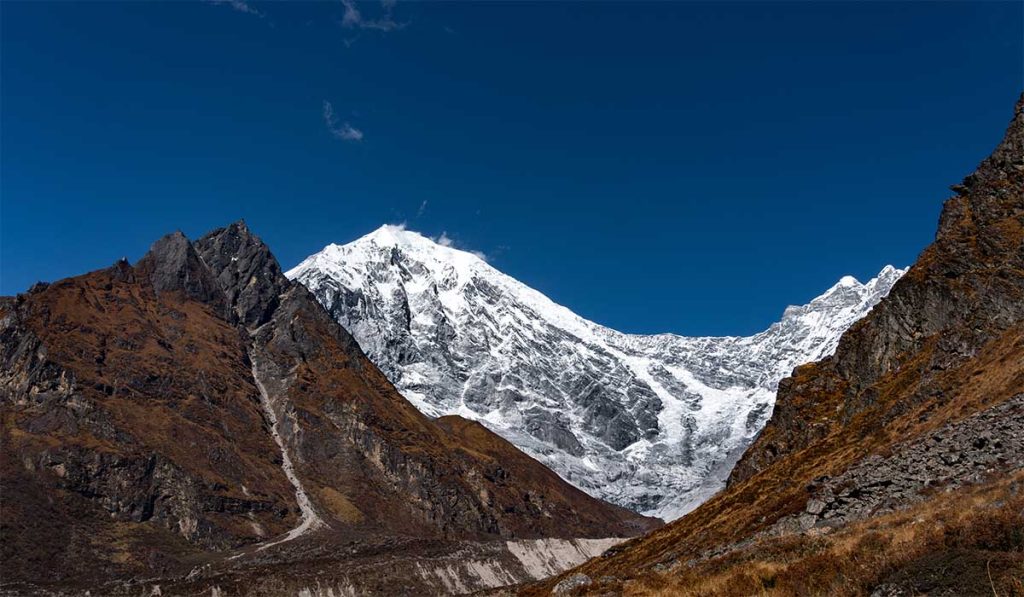
| Item | Quantity / Suggestion |
| Trekking backpack | 40–50 L, lightweight and durable |
| Hiking boots | 1 pair, well broken-in |
| Warm layered clothing | 3–4 layers (base, fleece, jacket, outer shell) |
| Down jacket | 1, preferably compressible |
| Gloves and hat | 1 pair of each, warm and comfortable |
| Trekking poles | 1 pair, adjustable |
| Water bottle/hydration system | 1–2 L capacity |
| Snacks (nuts, energy bars) | Enough for daily energy boosts (100–200 g) |
| Sunglasses & sunscreen | 1 pair of sunglasses, 1 sunscreen |
| Small first-aid kit | 1 kit with basic medicines |
| Lightweight daytime clothes | 2–3 sets, breathable and quick-dry |
| Sleepwear / comfortable clothes | 1–2 sets for teahouses |
| Waterproof bags/covers | 1–2 for backpack and electronics |
| Electronics (camera, phone) | 1–2 devices, with chargers and power bank |
Food and Accommodation
You will mostly stay in tea houses and small cabins along the trail in Tserko Ri trek. These lodgings are simple but comfortable. They are equipped enough to provide you with a warm place to rest after a long day of trekking. In most of them, the bathrooms are generally shared and extra comfort can be achieved with extra payment. Here, by extra comfort, we mean facilities like hot showers and a speedy internet connection. Besides, staying in local tea houses also gives you a chance to experience the hospitality of friendly Tamang and Sherpa communities.
The food along the trail is fresh and hot. Foods like Dal Bhat (rice with lentils) give you a local taste. They are a must-try option as well because of the energy they provide. Dal Bhat is served with vegetables, pickles, and sometimes meat. Besides, there are also noodles, soups, pancakes and western-style dishes p[prepared in most tea houses. Hot drinks such as tea, coffee and hot chocolate are widely available. They will be perfectly suited for the cold day.
Trekkers are suggested to carry some snacks, such as energy bars, chocolate, or nuts, to maintain energy during long trekking hours. Staying hydrated is also important. So, also carry a water bottle.
In short, the accommodation and local food on the Tserko Ri Trek are simple. But they are enough for a comfortable and authentic Himalayan experience.
Safety Tips For The Tserko Ri Trek
The Tserko Ri Trek is one of the most rewarding trips in the Langtang Valley, but it takes you above 5,000 meters. At such an altitude the air is very thin and the weather is unpredictable as well. Due to this, this trek demands an extra care.
Acclimatization is Crucial
Acclimatization is the key to safety in a high altitude trek.You must give your body enough time to adjust to the altitude before facing the 5,033 meters. That’s why it is strongly recommended to spend at least a nights in Kyanjin Gompa before attempting the climb. Walk slowly, take regular breaks, and avoid rushing. Take rest instead of pushing too hard.
Awareness About Altitude Sickness
Awareness of altitude sickness is crucial. Even experienced hikers can suffer from high-altitude problems. Symptoms like headache, dizziness, shortness of breath, loss of appetite, and nausea are seen if a person gets caught by the altitude sickness. If they persist, stop climbing and rest. Taking medicines like Diamox can help, but never ignore severe signs.
Hydration And Diet Make a Big Difference.
Drink at least three liters of water daily. Warm soup, especially of garlic are very helpful at high altitudes. Avoid alcohol and smoking. They dehydrate the body which will increase the risk of altitude sickness. Try to eat light but consume energy-rich meals to maintain strength.
Always trek with a licensed guide.
Independent trekking is not allowed in the Langtang region, and for good reasons. A local guide knows the safest trails and understands weather patterns. So, also be wise while choosing the trekking agency.
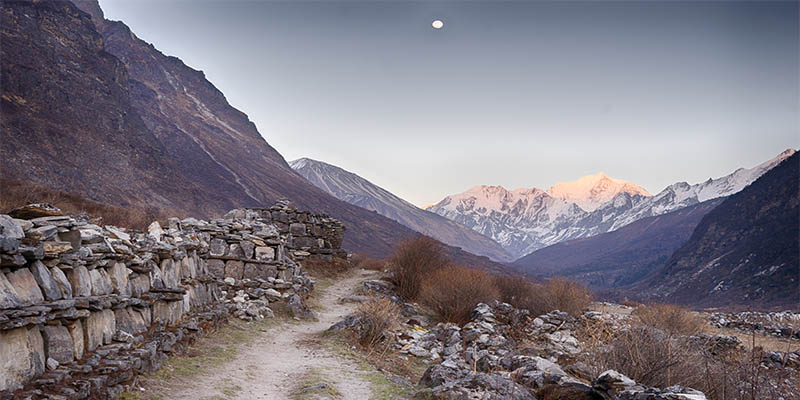
Prepare proper gear
Carry warm clothes, down jackets, gloves, hats, and layered outfits, as mornings and evenings can be cold. Good trekking boots with ankle support are needed for rocky terrain. Trekking poles are very useful for both steep ascents and gentle descents. Don’t forget a headlamp, as you might return late in the evening.
Start early in the morning.
Winds are calmer, skies are clearer, and the trail is safer during the early hours. Beginning before sunrise not only helps avoid bad weather but also gives you more time to enjoy the views from the top without rushing back.
Be cautious on the trail.
The hiking route to Tserko Ri is steep and often rocky. Loose stones can make the descent challenging. Walk with stable steps, use trekking poles for balance, and always follow the marked trails instead of taking shortcuts.
Plan your finances.
There are no ATMs or digital payment facilities in the Langtang region. Carry enough Nepalese rupees in cash to cover the additional services. Services like hot showers or device charging and connectivy may cost extra.
Prepare for emergencies
Make sure you have travel insurance that covers trekking and helicopter evacuation above 5,000 meters. Make sure that your guide is carry a satellite phone or has local contacts for emergencies.
Respect culture and nature.
The Langtang Valley is not only a trekking destination. It is equally a cultural and spiritual home of Tamang and Tibetan-influenced communities. Always ask before photographing people or monasteries. Do not disturb wildlife and more importantly, manage your waste properly.
